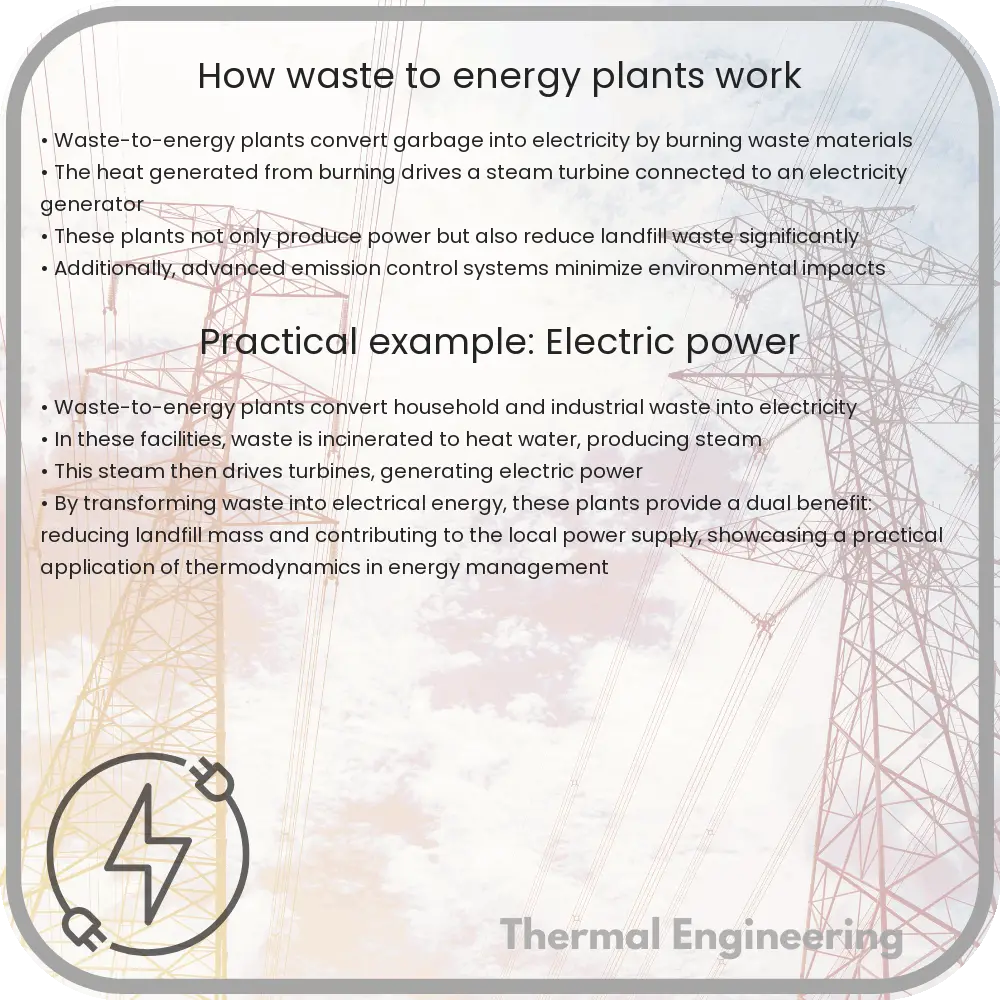Delve into the workings of waste-to-energy plants, their role in converting non-recyclable waste to power, and the balance they provide in modern waste management and renewable energy production.

Understanding Waste-to-Energy Plants
Waste-to-energy (WTE) plants offer a two-pronged solution to waste management and energy production by converting non-recyclable waste into usable forms of energy, typically electricity or heat. This process not only helps in reducing landfill usage but also produces energy from materials that would otherwise be considered waste. In this article, we will explore how waste-to-energy plants operate and their significance in modern waste management practices.
Basic Process at Waste-to-Energy Plants
The fundamental operations in a waste-to-energy plant involve several key stages, which include waste delivery, processing, combustion, energy recovery, and pollution control. Each stage plays a crucial role in ensuring the efficiency and environmental safety of the plant.
- Waste Delivery and Handling: The process begins with the collection of municipal solid waste (MSW) which is delivered to the WTE facility. This waste is typically non-recyclable and would have ended up in landfills. It is then managed at the facility to prepare for combustion, involving sorting and removal of oversized items or materials that might interfere with combustion.
- Combustion: The core of a WTE plant is its incinerator. Waste is burned at high temperatures (usually above 850oC), which reduces its volume by approximately 70-90%. This incineration process converts the organic substances present in the waste into gases, ash, and heat.
- Energy Recovery: The heat generated from the combustion of waste is used to produce steam. This steam is then utilized to drive turbines which generate electricity. In some cases, the steam can be used directly for district heating or industrial processes.
- Pollution Control: Controlling emissions is crucial in a WTE facility to minimize environmental impact. Advanced pollution control systems filter out contaminants such as dioxins, furans, mercury, and particulate matter from the combustion gases before they are released into the atmosphere.
- Ash Handling: Post-combustion, the remaining ash is treated as per regulatory standards. This ash contains inert material and metal residues that can sometimes be recycled and used in construction or road filling.
Benefits of Waste-to-Energy
Waste-to-energy plants have multiple benefits:
- Reduction in Waste Volume: Transforming waste into energy substantially decreases the amount of waste going to landfills, thereby extending their lifespan and reducing environmental strain.
- Energy Generation: WTE technology provides a renewable energy source which reduces reliance on fossil fuels, contributing to energy security and greenhouse gas reduction.
- Resource Recovery: Metals and other materials are often recovered during the WTE process, promoting recycling and resource conservation.
- Job Creation: These facilities contribute to local economies by creating jobs in operation and maintenance.
Environmental Impact and Challenges
While waste-to-energy plants offer significant advantages, they also face challenges, particularly concerning emissions and residual waste management. Modern WTE facilities operate under strict environmental regulations to control and reduce harmful emissions. Continuous advancements in technology and rigorous monitoring are crucial to ensure that these plants operate within the acceptable standards set to protect the environment and public health.
In summary, waste-to-energy plants play a pivotal role in managing municipal solid waste while providing renewable energy. They help mitigate the impact on landfills, enhance energy security, and contribute to sustainable waste management and energy supply strategies. Continued technological improvements and stringent environmental governance are essential for maximizing their benefits and minimizing potential adverse impacts.